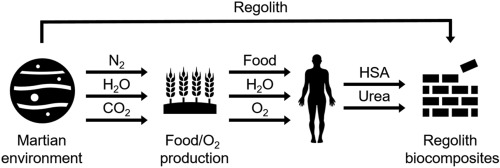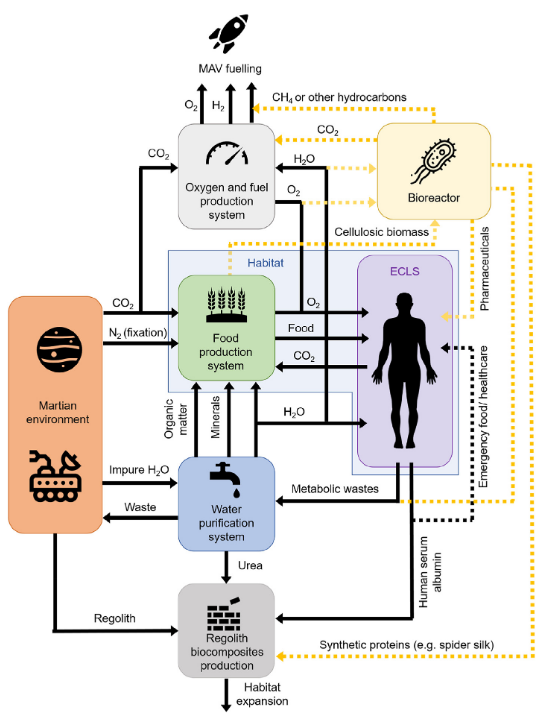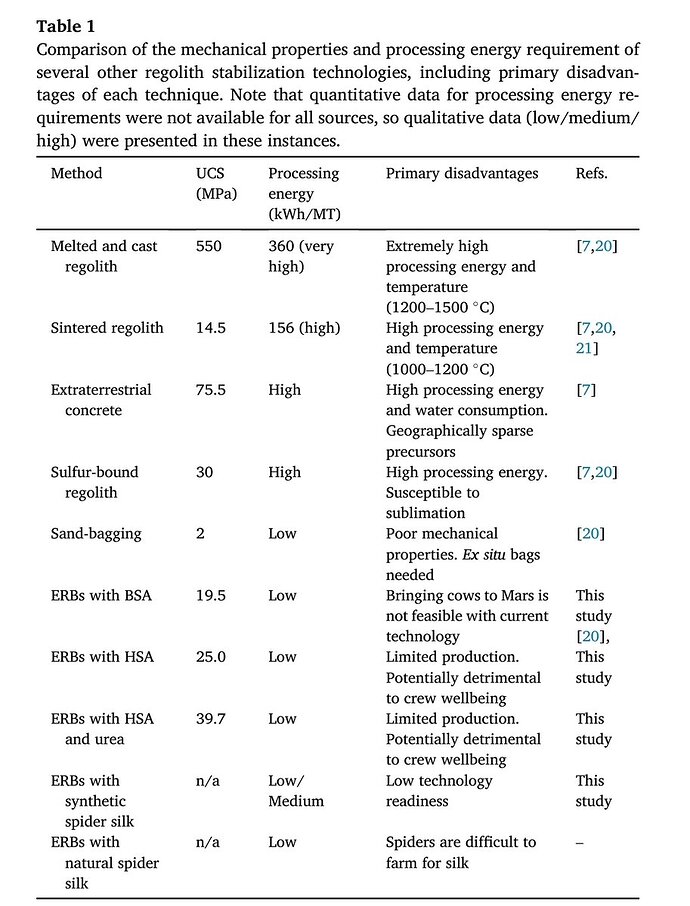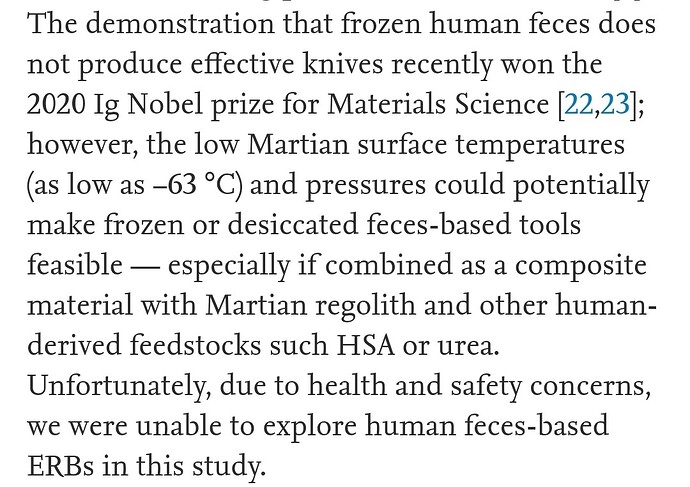In a paper published in the September, 2021 issue of the Elsevier journal Materials Today Bio, “Blood, sweat, and tears: extraterrestrial regolith biocomposites with in vivo binders” (full text PDF download available from the link), the authors report making a material from simulated Lunar and Martian regolith and human serum albumen extracted from human blood to create a biocomposite with strength comparable to concrete. Adding urea can increase the compressive strength up to 300%. Here is the abstract.
The proverbial phrase ‘you can’t get blood from a stone’ is used to describe a task that is practically impossible regardless of how much force or effort is exerted. This phrase is well-suited to humanity’s first crewed mission to Mars, which will likely be the most difficult and technologically challenging human endeavor ever undertaken. The high cost and significant time delay associated with delivering payloads to the Martian surface means that exploitation of resources in situ — including inorganic rock and dust (regolith), water deposits, and atmospheric gases — will be an important part of any crewed mission to the Red Planet. Yet there is one significant, but chronically overlooked, source of natural resources that will — by definition — also be available on any crewed mission to Mars: the crew themselves. In this work, we explore the use of human serum albumin (HSA) — a common protein obtained from blood plasma — as a binder for simulated Lunar and Martian regolith to produce so-called ‘extraterrestrial regolith biocomposites (ERBs).’ In essence, HSA produced by astronauts in vivo could be extracted on a semi-continuous basis and combined with Lunar or Martian regolith to ‘get stone from blood’, to rephrase the proverb. Employing a simple fabrication strategy, HSA-based ERBs were produced and displayed compressive strengths as high as 25.0 MPa. For comparison, standard concrete typically has a compressive strength ranging between 20 and 32 MPa. The incorporation of urea — which could be extracted from the urine, sweat, or tears of astronauts — could further increase the compressive strength by over 300% in some instances, with the best-performing formulation having an average compressive strength of 39.7 MPa. Furthermore, we demonstrate that HSA-ERBs have the potential to be 3D-printed, opening up an interesting potential avenue for extraterrestrial construction using human-derived feedstocks. The mechanism of adhesion was investigated and attributed to the dehydration-induced reorganization of the protein secondary structure into a densely hydrogen-bonded, supramolecular β-sheet network — analogous to the cohesion mechanism of spider silk. For comparison, synthetic spider silk and bovine serum albumin (BSA) were also investigated as regolith binders — which could also feasibly be produced on a Martian colony with future advancements in biomanufacturing technology.

Or, in a more detailed view of the flow of resources in a Mars settlement.

As noted in the abstract, it may be possible to avoid sucking blood from the human colonists by employing silk harvested from genetically-engineered spiders from Mars. Wasn’t there a song about that?

Here are some details from the paper.

